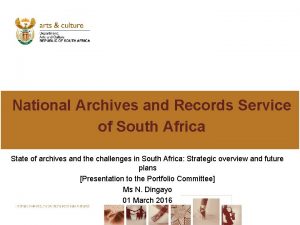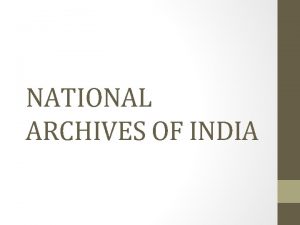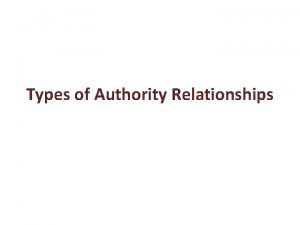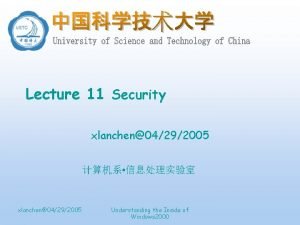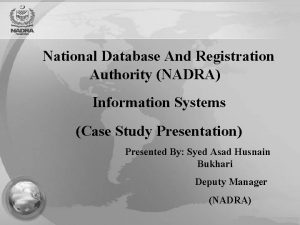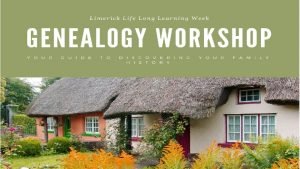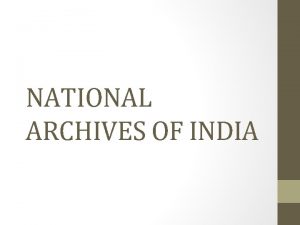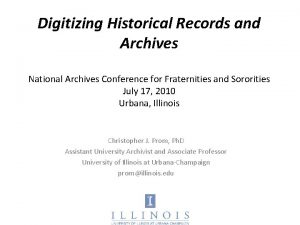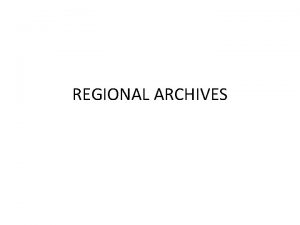The National Archives and local authority archive services









- Slides: 9

The National Archives and local authority archive services Keith Sweetmore Engagement Manager for the North of England

The National Archives • Formed 2003 -2006 o Public Record Office, Historical Manuscripts Commission, HM Stationery Office, and the Office of Public Sector Information. • UK Government Archive o Government department - Executive Agency of DCMS (Department for Culture, Media and Sport) o Advise ministers on archival and information policy o Keep the record of government • National Archive for England Wales o Over 11 million records, 974 – present day o Over 600, 000 documents consulted each year o Over 100 million documents downloaded each year • Sector leader for archives in England o Leadership role for the archives sector o Strategic engagement role 2

Our archive sector leadership role: • Closure of Museums Libraries and Archives Council (MLA) in 2011 o Libraries and Museums to Arts Council England o Archives to The National Archives o Engagement Managers for England: North, East, West and London • Archive leadership by The National Archives: o Long history of contact with the archive sector o Regulatory role for sector o TNA has approved Teesside Archives as a place of deposit for public records. • Who do we lead? o Over 2, 000 archives in England o Massive variety: size, subject, parent body, funding o Two dozen major local authority, higher education and specialist archives in Yorkshire • Gives us a unique perspective o Within archive sector o Wider heritage and cultural sectors o 3 Close working with ACE, HLF, LGA, ARA, CALGG, CLOA.

Archive Service Accreditation Standard A new standard for the UK archives sector • Developed by a partnership of UK strategic archives bodies • Replaces The National Archives’ Standard for Record Repositories (previous national standard) Launched in June 2013 • Developed through a process of co-creation with the wider archives sector • 45 varied archive services accredited to date • Places of Deposit expected to apply by the end of 2017 Accreditation… • Draws together the full range of standards affecting archive services • Provides an independent overview of service performance, includes peer review Sustainable service development support • Generates improvement plans, and subject to periodic review • Future link to eligibility for funding 4

Places of Deposit Approval • Intellectual access (cataloguing, digitisation) • Physical access (3 days/ 21 hours) • Controlled searchroom with advice and support for users, adequately staffed • Storage conditions, PD 5454 • Access to conservation services • Risk management (link to accreditation) 5

20 Year Rule Developments • Phased transition from 30 years to 20 years • Training for officers of originating bodies • Identification of materials for transfer • Introduction of a measure of financial support (total £ 6. 6 million over ten years), linked to record intake 6

Support programmes • Sector Sustainability Fund • National Cataloguing grants scheme • Transforming Archives traineeships • Fundraising for Archives Programme • Informal mentoring, formal training 7

Key development trends for archive services: • Digital delivery o Digital preservation o Digitisation of content • Audience development and volunteering o Commissioning o Community archives • New structures: o Income generation o Funding bids for service and premises renewal o Partnerships o New governance models (‘spinning out’) 8

 South african national archives
South african national archives National archives gb rail 253/516
National archives gb rail 253/516 Write a brief note on the national archives of india
Write a brief note on the national archives of india National archives
National archives National archive of criminal justice data
National archive of criminal justice data Category 5 and 6 local authority districts
Category 5 and 6 local authority districts Types of authority relationship
Types of authority relationship Local security authority
Local security authority Local security authority
Local security authority Nadra kiosk reporting
Nadra kiosk reporting
